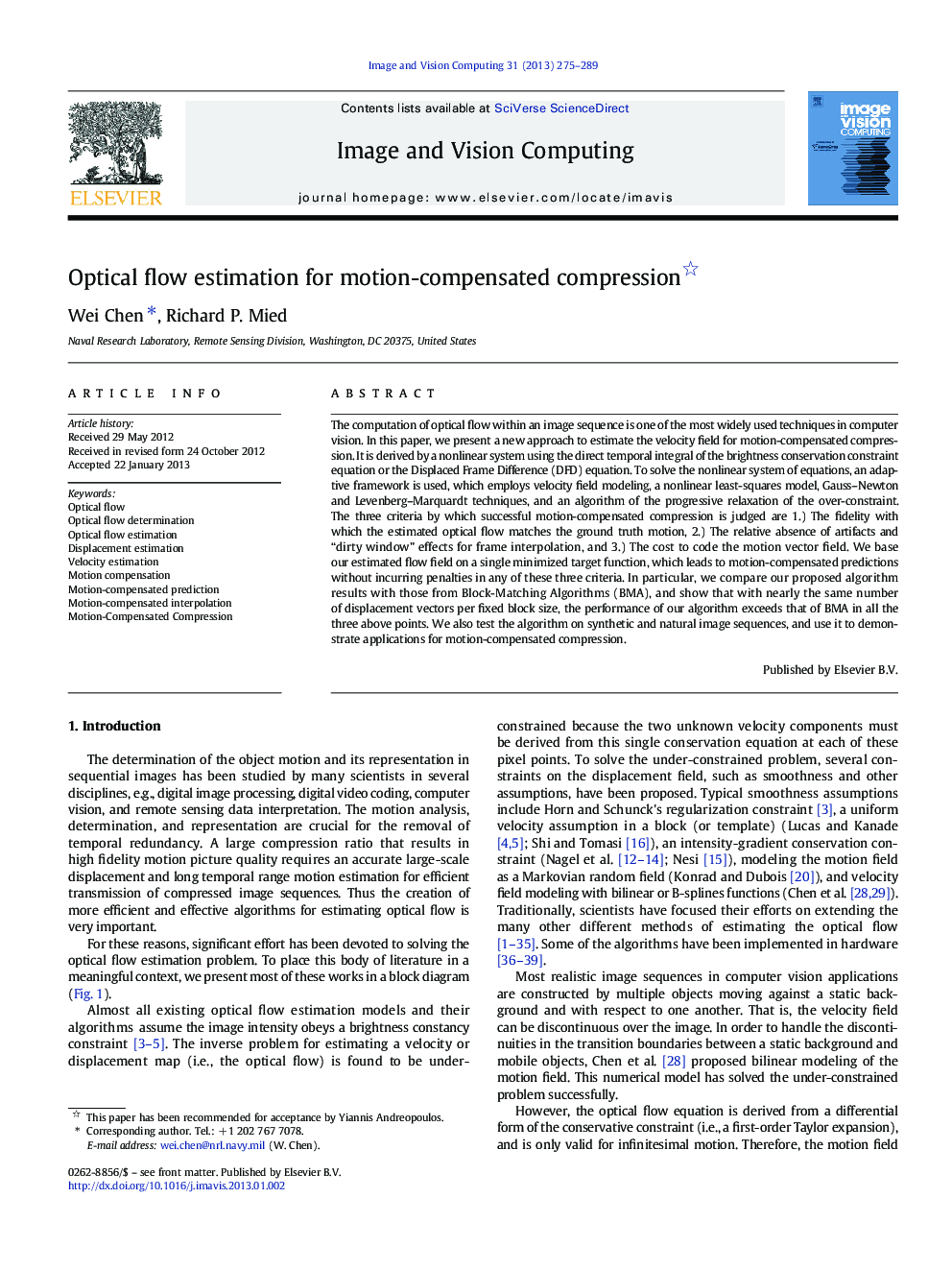| کد مقاله | کد نشریه | سال انتشار | مقاله انگلیسی | نسخه تمام متن |
|---|---|---|---|---|
| 527076 | 869282 | 2013 | 15 صفحه PDF | دانلود رایگان |

The computation of optical flow within an image sequence is one of the most widely used techniques in computer vision. In this paper, we present a new approach to estimate the velocity field for motion-compensated compression. It is derived by a nonlinear system using the direct temporal integral of the brightness conservation constraint equation or the Displaced Frame Difference (DFD) equation. To solve the nonlinear system of equations, an adaptive framework is used, which employs velocity field modeling, a nonlinear least-squares model, Gauss–Newton and Levenberg–Marquardt techniques, and an algorithm of the progressive relaxation of the over-constraint. The three criteria by which successful motion-compensated compression is judged are 1.) The fidelity with which the estimated optical flow matches the ground truth motion, 2.) The relative absence of artifacts and “dirty window” effects for frame interpolation, and 3.) The cost to code the motion vector field. We base our estimated flow field on a single minimized target function, which leads to motion-compensated predictions without incurring penalties in any of these three criteria. In particular, we compare our proposed algorithm results with those from Block-Matching Algorithms (BMA), and show that with nearly the same number of displacement vectors per fixed block size, the performance of our algorithm exceeds that of BMA in all the three above points. We also test the algorithm on synthetic and natural image sequences, and use it to demonstrate applications for motion-compensated compression.
► A nonlinear constrained system for larger scale displacement motion is proposed.
► An adaptive framework for solving the nonlinear system of equations is developed.
► The estimated flow field is derived based on a single minimized target function.
► The motion-compensated prediction is optimized for video coding.
► There is only the smaller number of motion parameters for transmission/storage.
Journal: Image and Vision Computing - Volume 31, Issue 3, March 2013, Pages 275–289